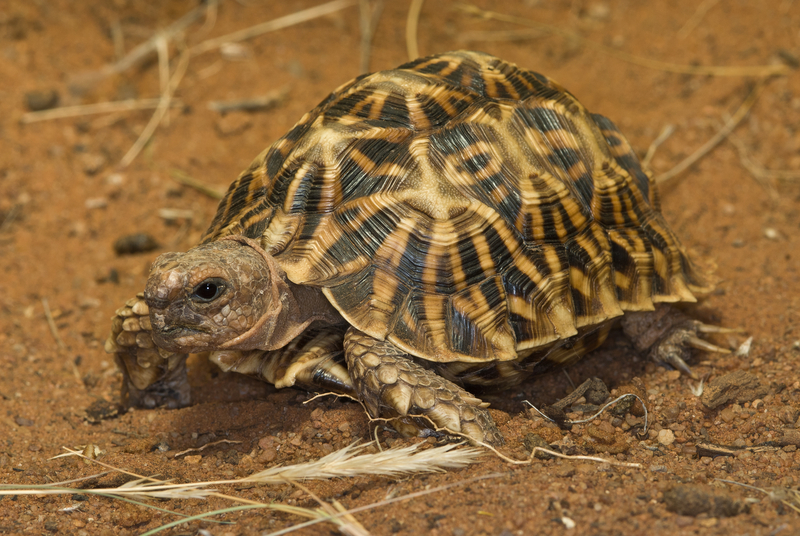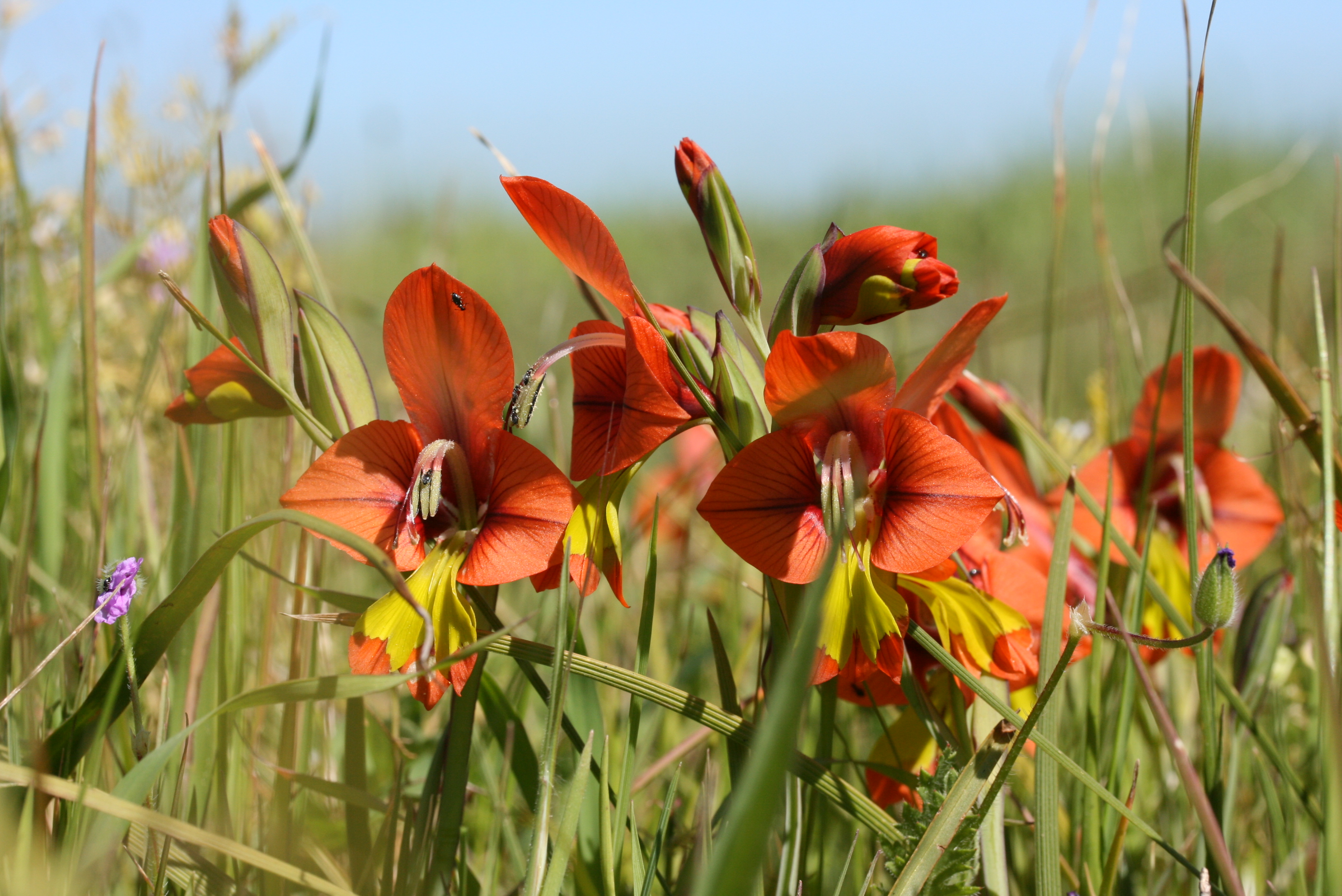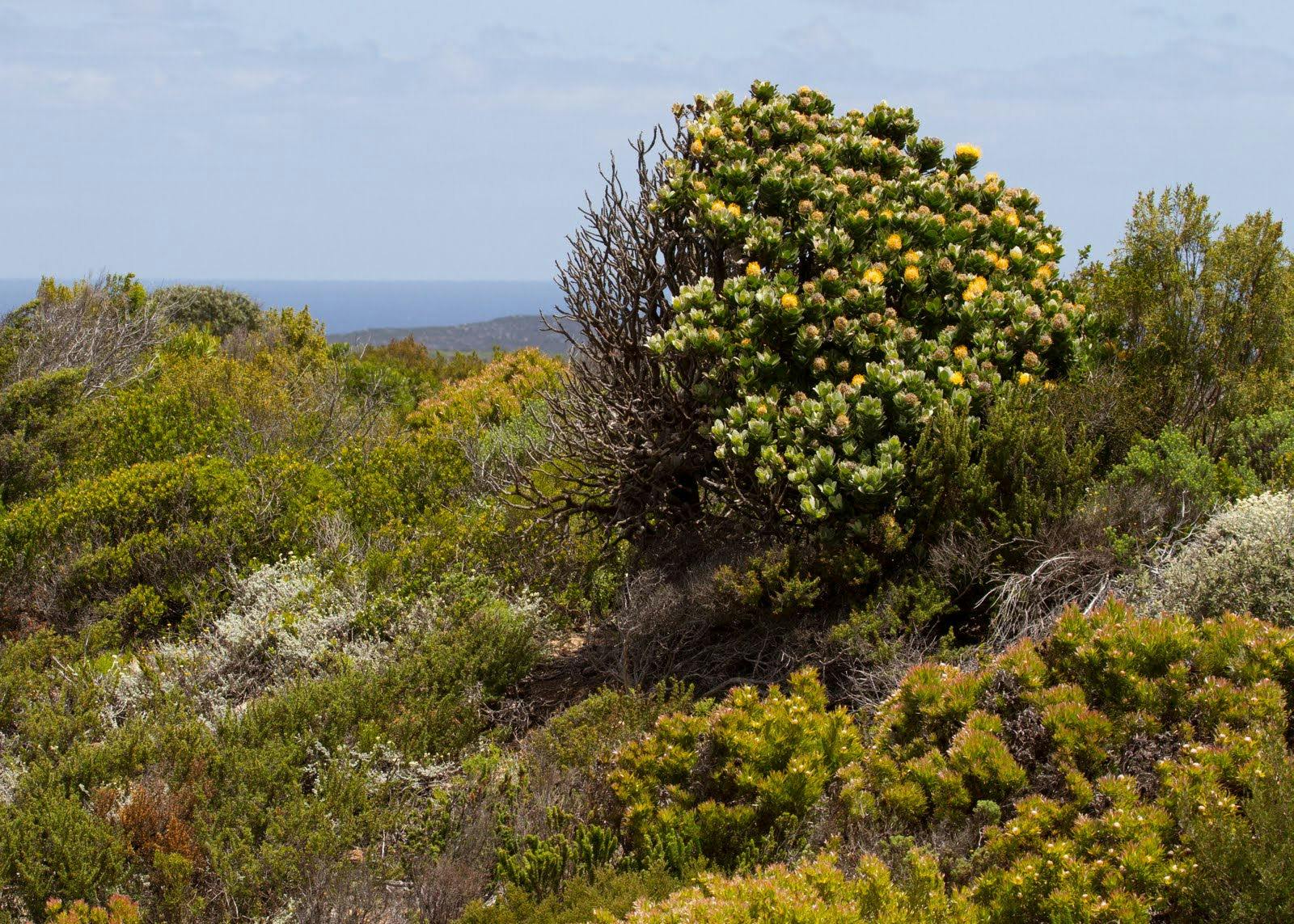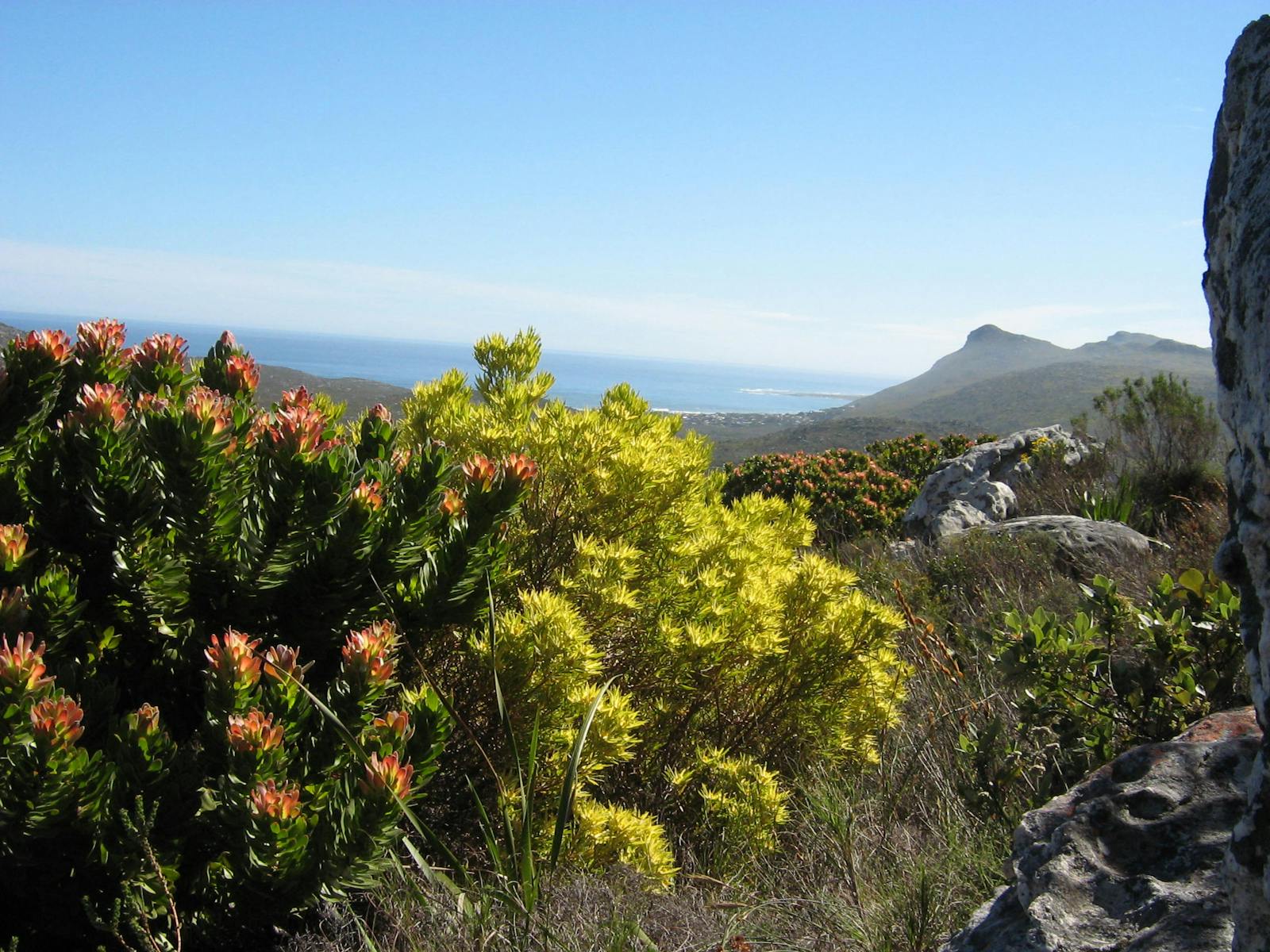Fynbos Shrubland
The ecoregion’s land area is provided in units of 1,000 hectares. The protection goal is the Global Safety Net (GSN1) area for the given ecoregion. The protection level indicates the percentage of the GSN goal that is currently protected on a scale of 0-10.
Bioregion: South African Cape Shrublands & Mountain Forests (AT2)
Realm: Afrotropics
Ecoregion Size (1000 ha):
5,381
Ecoregion ID:
89
Conservation Target:
47%
Protection Level:
7
States: South Africa
The critically endangered geometric tortoise is one of the most threatened reptiles in the world and it is endemic to this ecoregion. Nearly 95 percent of the lowland fynbos, which is the tortoise’s habitat, has been lost to urban and agricultural expansion. Other threats include overgrazing by cattle and uncontrolled fire. The Upper Breede River Valley contains the biggest area of the tortoise habitat.
The Fynbos Shrubland ecoregion is located at the southwestern tip of the African continent where it forms part of the Cape Floristic Region (CFR), one of the most biologically diverse regions on earth. This fire-prone ecosystem, where small-leaved, evergreen shrubs are the most common growth form, is associated with predominantly winter rainfall between 650 mm and 2,000 mm annually. Temperatures are generally mild: frost is seldom recorded and summer maximum temperatures seldom exceed 30°C, except in the interior valleys.
Fynbos shrubland is characterized by four major plant types: restioids, ericoids, proteoids, and geophytes. Restioids, members of the Gondwanan family Restionaceae, are evergreen rush or reed-like plants that are the uniquely diagnostic plant type of fynbos. The ericoids include many small-leafed shrubs, ranging from 0.5 m to 2 m tall, which give fynbos its heathlike appearance. The proteoids are the tallest fynbos shrubs from 2 m to 4 m in height, and comprise showy members of the Proteaceae, another Gondwanan family. Geophytes, or bulblike plants, are usually most conspicuous after fires, and have attractive blooms.

The flagship species of the Fynbos Shrubland ecoregion is the geometric tortoise
Both the lowland and montane forms of fynbos and renosterveld share similar biodiversity features. These two ecoregions comprise about 80 percent of the Cape Floristic Region, which is recognized as one of the world’s six Floral Kingdoms. The CFR includes 5 endemic plant families and 160 endemic genera. In total, Erica and Aspalathus in the family Fabaceae, as well as 11 other genera, have more than 100 species. The most famous species of fynbos, the king protea, is the country’s national flower. Many species come from ancient lineages, suggesting that they are Gondwanaland relicts. Examples include freshwater crustaceans (Phreatoicidea, Paramelitidae and the unique, cave-dwelling Spelaeogrypus lepidops).
Bird diversity is not particularly high, owing to the structural uniformity of the vegetation and the shortage of food. Among the strict and near-endemic species, most are found in both the Fynbos and Renosterveld ecoregions, such as Victorin’s scrub warbler, cape rock-jumper, orange-breasted sunbird, Cape sugarbird, Cape siskin, and Cape francolin. Other endemics include the Cape spiny mouse, the Cape dune mole rat, Duthie’s golden mole and Verraux’s mouse. The most common antelope species in the Cape Mountains are the Cape grysbok, bush duiker, and klipspringer.

Gladiolus alatus in Cape Fynbos. Image credit: Abu Shawka, Creative Commons
Fynbos habitats, particularly in the lowlands, have been severely impacted by agriculture, invasive alien plants and urbanization. Due to its inaccessibility and poor agricultural potential, the uplands have undergone less transformation. Protected areas contained in this ecoregion include the Anysberg, Baviaanskloof, and De Hoop Nature Reserves, Cederberg Private Nature Reserve, the Groot-Winterhoek and Cederberg Wilderness Areas, and Cape West Coast, Gouritz Cluster, and Kogelberg Biosphere Reserves.
Invasive vegetation, such as alien trees and shrubs, is seriously threatening the native vegetation. As well as encroachment, alien species increase fuel loads and consequently the severity of wildfires. Novel forms of agriculture can utilize otherwise marginal agricultural land. Some examples of these new forms include the cultivation of indigenous species for cut flowers, beverages, and for their medicinal properties. Urbanization is a serious concern, especially in the two metropolitan centers (Cape Town in the west and Nelson Mandela in the east) and along the coastal margin. Habitat loss is compounded by fragmentation effects, which lead to biodiversity loss on small remnants of irreplaceable habitat. Finally, global climate change is likely to have a major negative influence on the biodiversity of fynbos, given the specialized habitat requirements of the numerous local and point plant endemics.
The priority conservation actions for the next decade will be to: 1) implement active native plant restoration to re-establish fynbos habitat; 2) establish an efficient and well-managed system of using fire to control alien plants and enhance vegetation recovery; and 3) expand the Western Cape protected area network, especially for highly threatened regions.
Citations
1. Burgess, N., Hales, J.A., Underwood, E., Dinerstein, E., Olson, D., Itoua, I., Schipper, J., Ricketts, T. and Newman, K. 2004. Terrestrial ecoregions of Africa and Madagascar: a conservation assessment. Island Press.
2. Rainforest Trust. 2018. Protection for South Africa’s Rarest Tortoise. [Online]. [Accessed 6 April 2018]. Available from: https://www.rainforesttrust.org/project/geometric/
3. Fill, J.M., Forsyth, G.G., Kritzinger-Klopper, S., Le Maitre, D.C. and van Wilgen, B.W. 2017. An assessment of the effectiveness of a long-term ecosystem restoration project in a fynbos shrubland catchment in South Africa. Journal of environmental management. 185, pp.1-10.
4. Pool-Stanvliet, R., Duffell-Canham, A., Pence, G. and Smart, R. 2017. The Western Cape Biodiversity Spatial Plan Handbook. Stellenbosch: CapeNature.
http://www.capenature.co.za/wp-content/uploads/2017/12/DEADP_CN_WCBSP_Handbook_2017.compressed-ilovepdf-compressed.pdf






